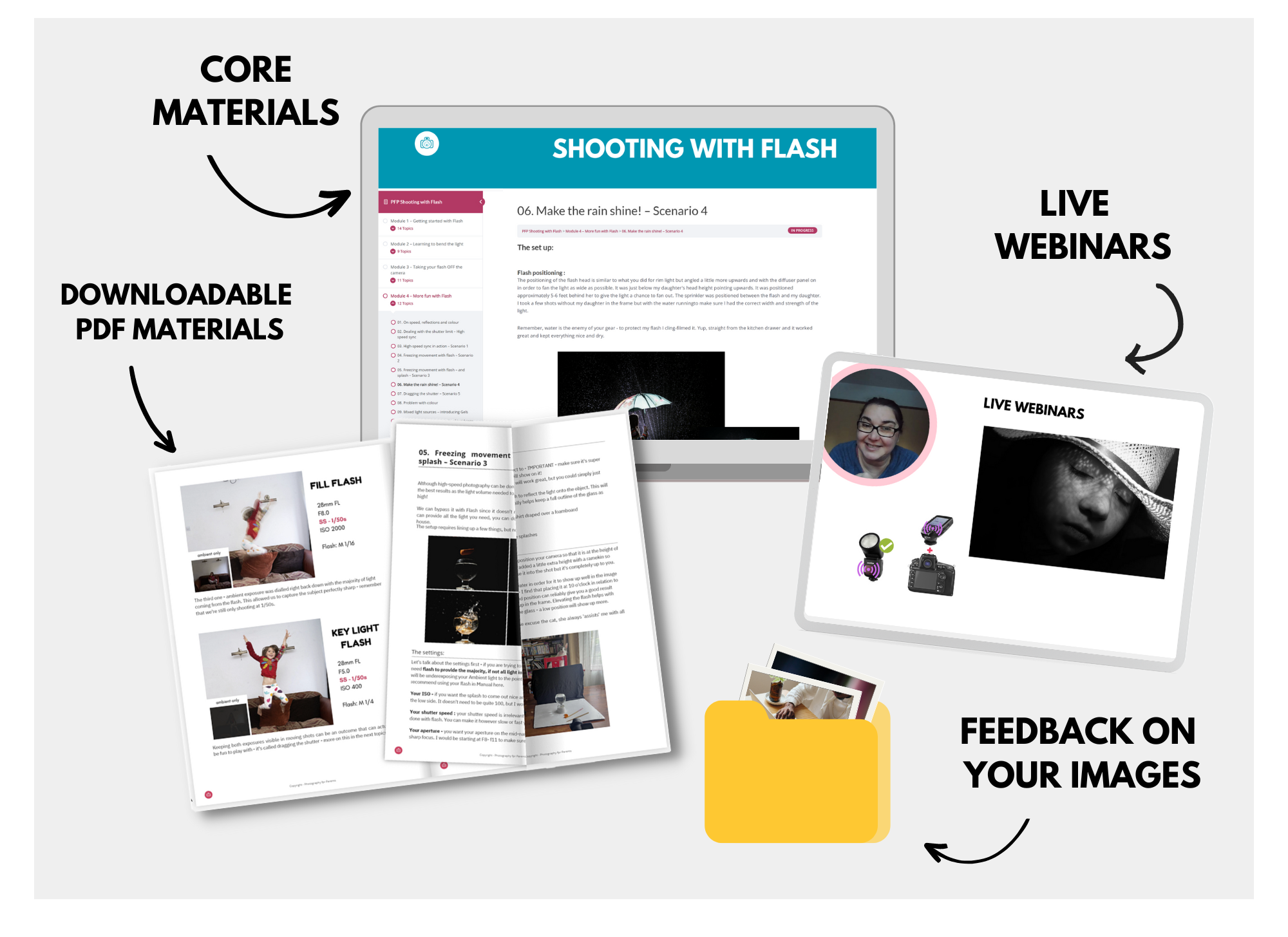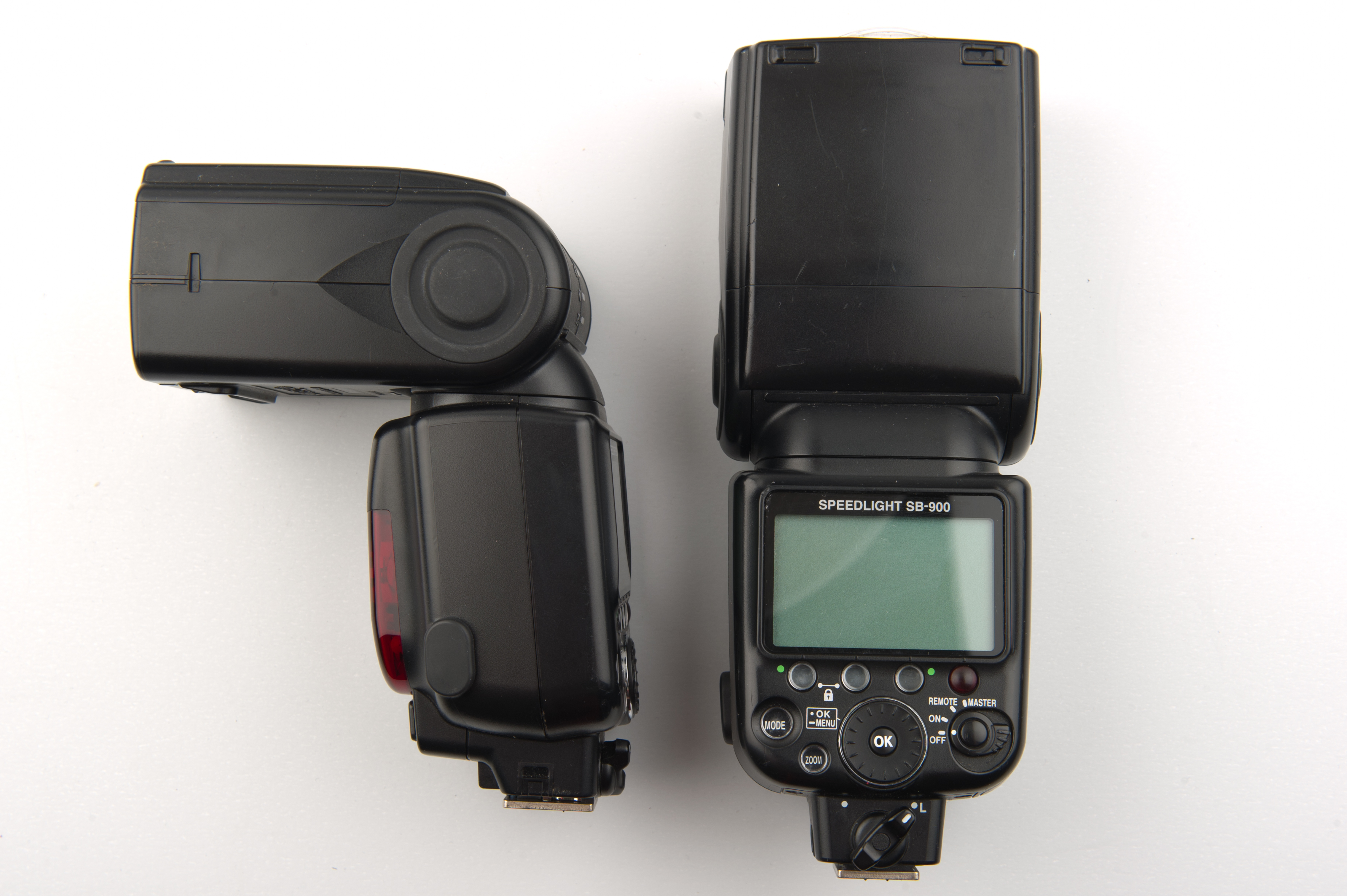PhotoParents
Shooting with flash
AKA : how to have your own portable sun
PhotoParents - Shooting with Flash
Next course starts on Monday 17 Feb 2025
Scared of Flash? Never got good results from it? Not sure how it works with your camera? Thinking it’s bound to be complicated and just for studio work? This is the course for you! We show you how to work your flash and your camera – on and off camera! - to get great, natural looking results. In this course you'll discover how to use flash not just to supplement light in dim spaces, but to use it creatively, to help you create images you wouldn't be able to capture with just natural light.
KEY COURSE INFO:
what you learn:
You will learn how to make your flash work with your camera and how to control it so that it gives you beautiful, natural looking light
You will learn to work with the flash off camera - giving you the freedom to position your light wherever it will most suit your subject rather than relying on what you have with natural or indoor light
You will learn to play with flash to capture a variety of creative outcomes and apply it to lots of shooting situations - from learning to fake pretty window light to freezing motion with Flash
This is the course for you if :
- You find yourself struggling with light especially in the darker autumn / winter months, and there never seems to be enough ISO or aperture to get you what you want
- You can already use your camera in manual and want to add mastery of detachable flash to your skillset - so you can never worry about insufficient or poor light wherever you are, or whatever unknown space you go into
- You want to be able to make flash images look natural rather than sporting that famous 'deer in the headlights look. A good flash image never 'looks' like a flash image
- You want to learn how to capture creative images using a flash - such as freezing motion, creating dramatic shadows, or adding a splash of light to specific areas of the frame.
- You want to add this versatile skill to your toolbox so you can adapt it to different shooting scenarios. ESPECIALLY if you're considering taking up photography professionally or semi professionally, this is an immensely useful skill to have.
Next Shooting with Flash course starts on 17 Feb 2025

Why shoot with flash in the first place?
“Don’t use Flash – it will wash out your child”
“Flash will make your photos look horrible”
‘You can’t control flash – no control over what your photos will look like”
You may have heard those statements, maybe even uttered them yourself. And to a degree – they can be true – but only because, if you don’t know how to control and work any tool, it’s likely to give you terrible outcomes – remember how much poorer your photos were when you first started with your camera on full auto?
Here is how I see Flash, and what this course is about:
COURSE PREREQUISITES
YOUR SKILLS:
We recommend that you are comfortable in shooting in full manual mode. It's possible to use flash in priority modes of course, but you don't have full control of its strength and level.
YOUR EQUIPMENT:
You will need to have a detachable flash for your camera make. This could be the same brand as your camera or a compatible third party flash manufacturer.
You will also need a way of triggering your flash OFF camera - in some cases, you may be able to do this directly from camera or via an additional remote trigger / controller. Click here to see our Flash buying guide below
Shooting with FLASH
Book your space now:
2 ways to book - purchase the course outright or access it as part of our new Photoparents Membership
Course starts :
17th Feb 2025
(4 weeks )
What’s included:
- 4 weekly modules covering shooting with flash on and off camera
- weekly live online class ( also recorded)
- personal feedback and advice on your images*
- private support group
*Personal feedback is included if you purchase the course outright, or as an optional extra inside our Photoparents membership ( extra £70 per course)
Single course booking
£
179
Photoparents membership from
£
42
Per month
INSIDE THE MODULES - aka WHAT DO YOU LEARN?
Module 1: Getting Started with Flash
In this module we introduce you to the principles of making your flash work with your camera. We show you how the two work together in layering exposures, how you can control both the flash and natural light side and how to achieve predictable outcomes from your flash. This is the biggest learning curve because the way you work your camera with flash is very different to how you do this with just natural light and understanding the control side of things will let you get creative afterwards.
Major Takeaways:
At the end of the module you will have gained an understanding of how to work your flash ON your camera. With that, you will have learned how to balance your key light and your fill light, how to combine flash exposure with a natural light exposure, how to supplement or even replace light with flash light. You will also make first steps into bouncing the light to give it a more natural appearance.

Next course starts on 14 Feb 2025
The course is awesome!! It is soooo worth it! I am loving it. It has opened up a whole new angle to photography. Not been this excited since I started! Definitely worth doing!
Estelle Gibbs
The course covered exactly what I needed it to in terms of breadth and depth – thank you. The course has not only improved my confidence with using flash but made me consider light more generally which I didn’t expect. Thanks so much!
Michaela Strivens
Frequently asked questions
We assume you don't know much, if anything about shooting with flash so we will be taking you through it step by step. What we do need from you is the ability to shoot in full manual mode on your camera so that you really get to grips with how Flash works with it.
Unfortunately no, the pop up flash is not enough and you will need a detachable flashgun ( and possibly a trigger) to use in the course. This doesn;t need to be a major expense - please see below our Flash buying guide to understand what you need and our suggestions for great, affordable equipment.
We will be talking about flash modifiers such as softboxes or umbrellas in the course, but they are not needed as such in the course.
Unfortunately not, we are not providing flash rental at this time.
Flash buying guide
If you thought buying a camera was tricky, flash buying is like that, but more so! But worry not, we have some tips for you that will make this process a lot less painful ( and less expensive!)
>>> What flash do I need? or more precisely - what do I need from my Flash?
You need a detachable flashgun - sometimes referred to as Speedlight or Speedlite. Flashguns will vary in price and features from model to model, but I would recommend making sure these features are covered:
- You want to be able to point it not just at your subject but also elsewhere - this means you want a flash with a rotating head - not just one that goes up and down. Thankfully most flashes other than the most compact models which lack all other features fulfill that requirement
- You want to be able to control its strength to suit your needs - this means your flash needs to have a manual mode
- You want TTL mode - this is a sophisticated auto option for flash which is extremely useful especially with subjects on the move or where you can't fully control the light in your environment
- You want HSS capability - this means your flash will be able to fire even at fast shutter speeds - without this setting, your shutter speed with flash on will typically be restricted to 1/200s
>>> Do I need to buy the same brand of flash as my camera?
You can, but you don't have to, there are some third party flash manufacturers that make great flashes, compatible with your camera brand, at a much lower cost compared to a branded unit. We are big fans of Godox ( who are not sponsoring or paying us in any way to promote them! ) as they have options for each camera make that are affordable and good quality. The extra bonus is that if you need to get a remote trigger/controller, the cost of those is much lower too.
You DO NEED to make sure that your third party flash is designed for YOUR camera make - Godox for Nikon will not work on a SONY and vice versa
In most cases, flashes will be compatible across multiple models within the same brand - this means that if you have a Nikon camera and get a Nikon compatible flash, if you were to upgrade to a newer Nikon down the line, the flash you have should be compatible with your newer camera also.
>>> Are all flashes as powerful as each other? AKA - full size or compact?
If you started looking into buying a flashgun, you may have noticed that they come in broadly 2 different sizes - full size and compact. The compact ones are roughly half the size of the full size ones and are designed to go on smaller, mirrorless camera bodies so that the weight on top doesn't unbalance your camera too much. A full size flash can sometimes weight more than a small mirrorless camera and lens combined, so if the flash is to be used on camera, size is definitely a consideration.
However, there are some drawbacks as well - most visible in the total lightning power that your flash can punch. A flash strength is expressed in something called the Guide number. To put it simply, it gives an indication of the flash light's strength or reach. The higher the number, the greater that strength can be, or the farther the flash can reach in terms of distance from the flash to the subject in order to achieve a good exposure.
Typically, the guide numbers on the full size flashes will be roughly double of what you have on a compact flash - a guide number on full size Godox V860III is 60, on its compact flash tt350 it's 36
This means that in some situations, your compact flash may reach its top power before you got what you needed out of it and you may need to compensate with other tools such as your ISO or aperture.
So what do you choose? Portability or power? If you are using the flash to mainly just photograph your family, you will most likely be absolutely fine with a compact flash. If you are planning on using your Flash in a professional setting, I'd recommend a full size flash.
>>> Do I need something to trigger my flash off the camera?
There are multiple ways in which you can get your flash to trigger off camera, and some require additional equipment, but some don't.
Triggering a flash off camera without additional equipment:
In order to be able to do so, you need the following to be available on your equipment
- -your flash needs to have an optical sensor built in
- -your camera needs to have a pop-up flash built in AND - this is crucial - you need to be able to use your camera as a master/controller unit.
Not all cameras which have a pop up flash are capable of acting as master unit - specifically the entry level dslr ranges such as the 3000 or 5000 Nikon range ( Nikon d3300, d5500 etc) or Canon d250 etc lack that option.
I should add that the optical trigger method is not the most reliable and requires line of sight between the flash and the trigger flash which is not always practical. Using radio triggers is a much more reliable method of working with your flash remotely
>>> I need a remote trigger - but which one?
Your choice of remote trigger - or triggers will fully depend on your flash and camera brand.
In short, the trigger you get needs to be able to talk to your camera and your flash.
The trigger / controller talks to the camera through the hot shoe - we mount the trigger unit on top of the camera as you normally would with the flash unit and so as long as you got a trigger made for your camera brand ( branded or third party) you're good to go there.
But of course, you also need it to talk to your flash unit, and this is where the complications begin. Your trigger unit can talk to the flash unit using either a proprietary radio or infra red channel. Camera and flash manufacturers are protective of those, so typically you will need to use the same brand trigger as your flash brand. To trigger a Nikon flash you need a Nikon controller, to trigger a Godox flash you need a Godox controller and typically those controllers will be compatible across the whole a range of models - AKA - no matter your Canon flash model, any Canon controller will be able to talk to it. Yongnuo flashes and controllers are the exception to that rule - not all yongnuo triggers are compatible with all yongnuo flashes.
>>> My Canon/Nikon/Sony own trigger is megabucks - I can't afford it!
So now you know that if you get a trigger that's the same brand, you just need one trigger, one flash and you're good to go.
BUT. Of course there is a BUT.
For one, the branded ( Nikon, Canon etc) triggers are expensive. We're talking £200+ expensive. Also, some flash units ( admittedly mostly those Cheapy McCheap ones) do not have a built in receiver that allows anything to talk to them via radio ir Infrared. So what now?
There is a way. Rather than getting 1 unit that talks directly to your flash, you can get 2 inexpensive units that will talk to each other. You mount one on top of the camera and one on the bottom of your flash unit. The unit mounted on top of the camera ( sender unit) talks to the camera via the hotshoe mount, it then send the relevant into to the second unit ( receiver unit) via radio. That info then gets passed to flash via the flash hotshoe and BAM the flash goes off.
And how much does that cost? Surely 2 units will be pricier than one? Not really, depending on what brand you go with, a pair of those sender/receiver units will be about £80 which is less than half of what you would pay for a branded unit.
>>> Anything else I need to know?
Batteries :
traditionally flashes work on AA batteries. This is still true for the majority of flashes out there, but in the recent years we've seen more flashes adopt proprietary, rechargeable lithium batteries. They come with pros and cons of course. If you only have one of those batteries, once it runs out of power, you have to wait till it recharges again. You can't simply pop fresh Duracells in. BUT the rechargeable nature of the batteries does mean you don;t have to hunt and ultimately waste fresh batteries
Round vs Square head
Traditionally most flash units have a rectangular shaped head, which spreads the light in a sort of oval shape in your scene. In the last few years we have seen new units, with round shaped heads which spread the light a bit more uniformly around the scene. Some photographers swear by them, others can't see what the fuss is about.
>>> So which specific flashes do you recommend?

We created a roundup of flashes we think are worth considering for your camera, set out by camera brand and divided into full size and compact size options, combined with their approximate pricing and compatible triggers. Please note that this is to be use in an advisory function only - we cannot guarantee that our suggested models will be 100% compatible with your camera - these things can change and some may not be compatible with the newest camera models. Always double check that your chosen flash is compatible with your specific camera model. Click on the relevant link below to see recommendations for your brand.
Micro 4/3 Flash Recommendations
Photography for Parents Fundamentals
Next course starts on 19 June 2023
OPTION 1: Fully immersed :
OPTION 2: Light touch
All the core learning materials and bonus materials but excluding the interactive elements such as our live class, personal feedback on your images - perfect for the more independent students

recommended
Fully immersed
All the learning resources, all the community, all the support, all the personal help. Virtually failproof
SPRING SALE
Ends Monday
15th May
£259/£159
Self-paced



